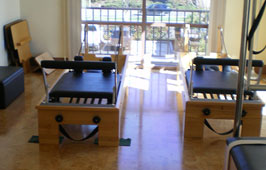Moisture Testing: APC Adhesive requires the use of moisture tests on all concrete and wood subfloors. Subfloor moisture percentages should not exceed the flooring manufacturer’s or APC Adhesive recommendations, whichever is lowest. If excessive moisture is present, use an appropriate vapor barrier.
The Calcium Chloride test measures moisture emission in concrete. The maximum level when installing cork flooring is 4 pounds per 1,000 square feet over 24 hours. APC recommends using a Concrete Moisture Encounter meter for reliable concrete testing. The meter should be pressed firmly to the subfloor for an accurate reading. Maximum reading for cork installations over concrete should not exceed 4 ? on the meter. Moisture in wood subfloors should be measured with a wood moisture meter. The moisture content should not exceed 14%. Subfloors should be within 5% of the wood flooring’s moisture content. Read flooring manufacturer’s moisture standards. A moisture meter can also be used to measure in concrete. Follow the instructions carefully. Moisture meters measure wood and concrete differently.
The Accelerated Plastic Film test is a good indicator test for concrete moisture. Tape 2′ x 2′ poly film squares with duct tape to concrete subfloor in several areas throughout the floor. Position a light close enough to warm the surface of the plastic film (approximately 18”). Lift the squares after 24-72 hours. If moisture condensation is present on the film or if the concrete has darkened, this indicates moisture is present.
Cork as a rule is more stable than wood flooring for the fact that when wood expands, it does so only in the direction of the grain. With cork, the expansion or contraction process is dispersed in all directions. With proper acclimation, installation and maintenance, any expansion/contraction will not be noticeable.
Maintaining a stable environment with temperature and humidity control is optimal. During installation, the following precautions should be taken: If installing in the winter; once the planks have been acclimated, do not install the joins too tightly as the floor can go through an expansion period months later. In summer; again after the tile have been acclimated, it is necessary to butt the tiles together tightly since dry heat will cause them to contract in winter.
Only floating floors should be installed over radiant heat systems. Floating floors tend to go through normal contraction and expansion as a unit since they are not attached to the sub-floor.
Certain precautions need to taken to minimize the contraction and expansion. Prior to installation, the slab needs to be heated and a 75-degree temperature maintained. The floor itself needs to be acclimated in the room for 72 hours prior to installation
We recommend the use of the floating floor with a foam film underlayment as a moisture barrier underneath.
Sweeping and damp mopping should be part of your regular maintenance program as grit could act as sandpaper and scratch your additional coat of sealer. If the floor starts to show signs of wear, simply apply another topcoat and this should bring back the original luster to the floor.





